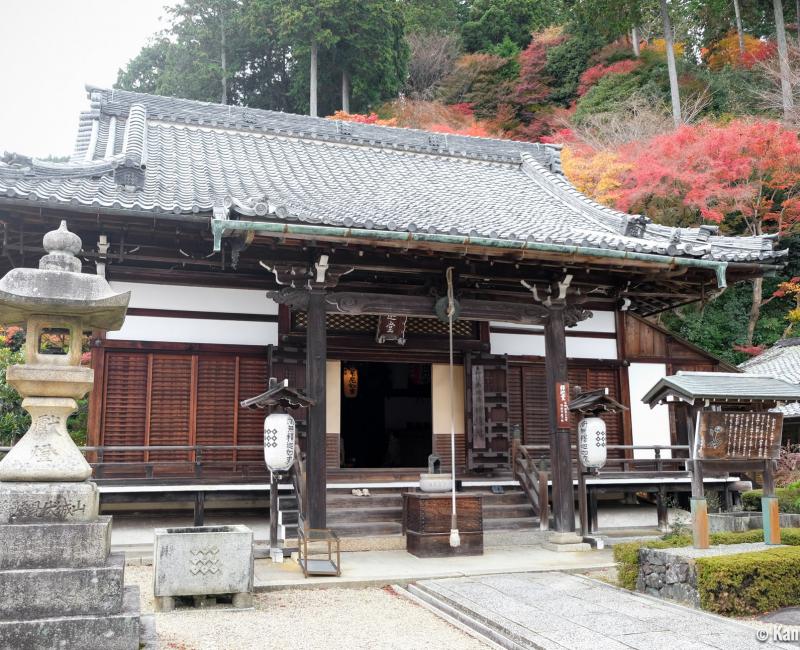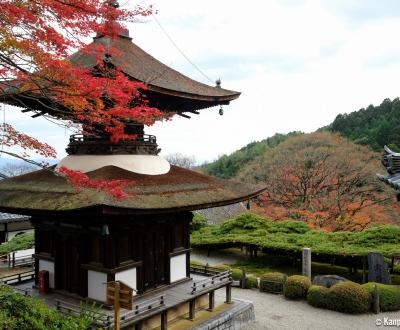Yoshimine-dera
20th Temple on the Saigoku Kannon Pilgrimage
Yoshimine-dera is a temple of the Tendai school of Japanese Buddhism, located in Nishikyo ward in the west of Kyoto. Founded in 1029 by monk Gensan, it is part of the 33 temples of the Kannon Pilgrimage in Kansai. It offers a short hike in the mountains, with stops at several remarkable places and is famous for its reddening maple trees in autumn.
Yoshimine-dera is the ideal destination to take a break from the tourists’ crowd, and unwind in the quiet mountains, in the south-west of Kyoto.
Take a train 🚅 bound for Osaka, then one of the buses that can ideally drop you off at the temple. There, a small, red railing bridge is the starting point of a wonderful hike.
The first part of the course consists of a 5 to 10 minutes’ walk to the impressive Sanmon gate that also serves as a reception. The main hall Kannon-do is the first remarkable structure encountered in the temple’s grounds. It was built in 1692 to worship Senju Kannon, the thousand-armed Bodhisattva, whose statue was made by monk Ninko. Next to the hall, on the left, Monju Jihokan is a museum of a more recent architecture sheltering Buddhist artworks and Cultural goods related to the place’s history.
From here on, a 30 to 45 minutes’ walk follows a marked path, where the signs in Japanese point to the important places and things to see. Make sure to stay on the path and follow the signs’ order, otherwise you will miss the must-sees of this pleasurable hike.

The path naturally leads to one of Yoshimine-dera’s attractions: Yuryu no Matsu, an massive pine tree doning the unusual aspect of a "playful dragon" if we believe the meaning of its Japanese name. The 600 years old tree, famous throughout the country, was designed Natural monument of Japan in 1932. It was more than 54 meters long until 1994 when it was damaged by an insect pest and was cut down to its current 37 meters. A little bit further stands the Tahoto Pagoda.
The remainder of the walk displays various religious buildings and statues. But what strikes the most is the unobstructed view on the valley and on the south of Kyoto, all along the walk. Thus, near Yakushi-do, a hall dedicated to the healing Buddha, a small terrace welcomes for a break, a nice place to admire a wonderful panorama. The highest point of the place, though, is the cemetery, that can be reached in a couple of minutes. The path then goes down the hill back to its starting point, passing by Shoren-in falls and an Inari shrine.
Public transportation to Yoshimine-dera are scarce, so it is necessary to plan at least half a day from the desired departure hour and the way back to Kyoto station. However, the distance helps preserve the place’s quietness, and is rather an advantage during koyo 🍁 season, as most of tourists prefer easier destinations. If planning an early morning excursion, Japanese whisky amateurs can even visit the Yamazaki Distillery in the same area.

